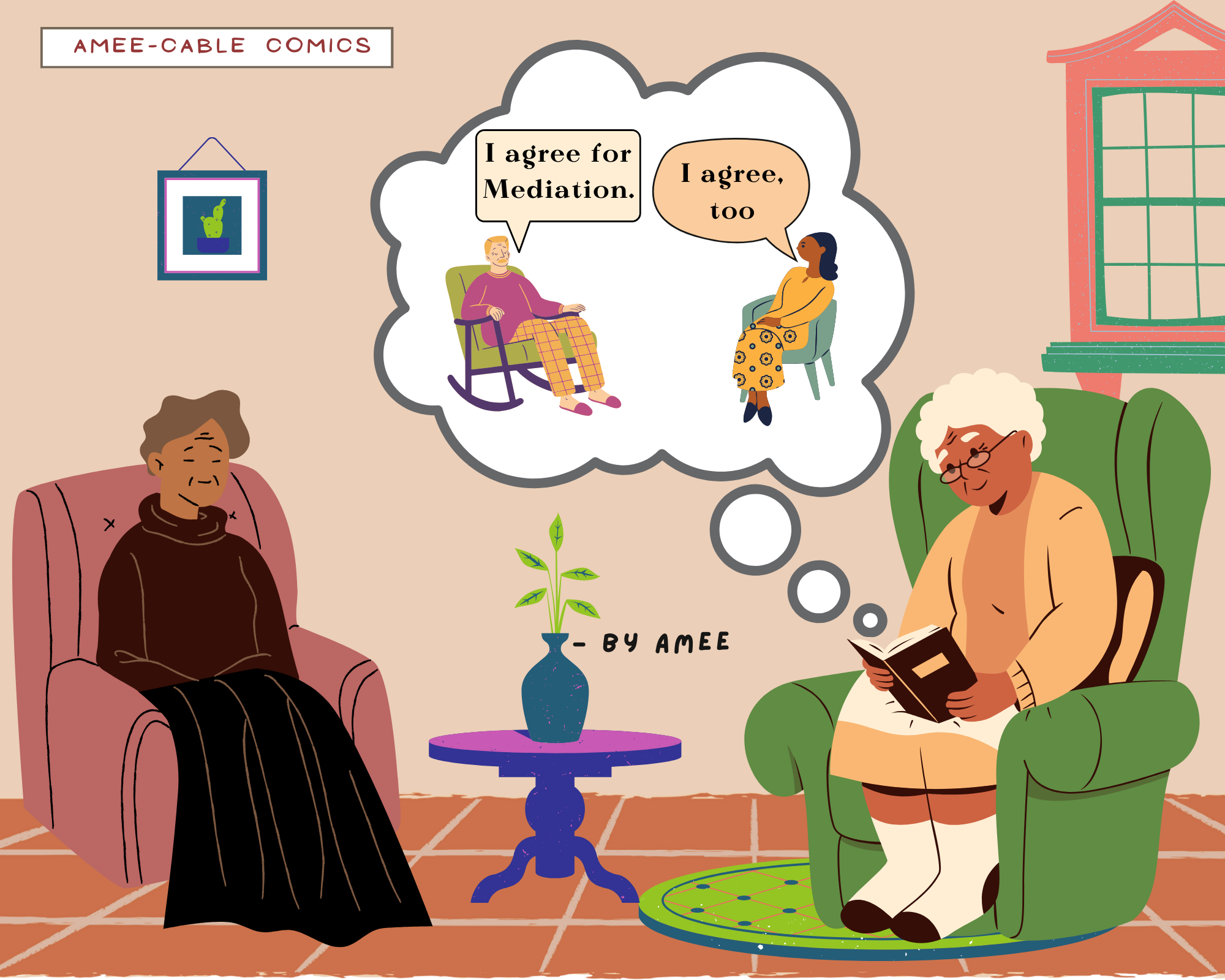In Mediation, What Makes It ‘Family Mediation’?
Join me for a walk through this town, where we’ll make four stops, each at a unique house, shedding light on the different facets of family mediation.

First House Stop: Our initial destination is a couple contemplating divorce due to their incompatibility. They’ve wisely chosen a mediator to oversee crucial matters, ensuring the preservation of their mental and emotional well-being.

Second House Stop: Continuing our journey, we arrive at a home where a happily married couple shares not only domestic bliss but also a patent for an innovative invention. Their patented product is in the stage of commercialization and is displayed for more investment. Delicate discussions arising from disagreements related to the patent’s commercialization and its display for potential investments have led them to seek a mediator. This mediator will help navigate these challenges, safeguarding both their professional and personal relationships. If this patent-related difficulty went to court for litigation, their marriage would likely survive?

Third House Stop: Our next stop delves into the story of an elderly couple in their 80s, living far from their children for over 30 years. With shared properties in town and strained communication, they grapple with the dilemma of property management. Seeking to avoid introducing a lawyer into their household, they explore mediation. This mediator would ensure careful communication and, if necessary, involve subject-matter experts like a property lawyer for paperwork assistance.

Fourth House Stop: Finally, we encounter a traditional Indian family. The patriarch, aged 85, holds authority over the family business and personal matters for four generations. Tensions within the third generation, particularly regarding decisions for the family business, threaten to divide the household. Despite initial efforts by the oldest within the family to mediate, the other family members proceed to decide to bring in an external mediator to address business tensions collaboratively— in private, preserving their personal relationships.
There! four stops, each with unique family element!
This journey through diverse family scenarios underscores the varied contexts in which mediation plays a crucial role. Each house tells a unique story, showcasing the adaptability and effectiveness of family mediation in preserving relationships and resolving potential delicate dispute situations.
In essence, the transformation of mediation into ‘Family Mediation’ hinges on several key elements:
1) Blood Bonds: Familial ties create a unique backdrop for conflict resolution, where the presence of shared ancestry adds depth to the mediation process.
2) Family Relationships: The complex web of family connections plays a crucial role, as interactions among relatives often add layers of complexity to disputes, requiring a subtle approach in conflict resolution.
3) Impact of Separate Family/Personal Laws: The influence of separate family and personal laws, distinct from general laws, introduces nuanced considerations that are specific to family dynamics, affecting the mediation approach and outcomes.
4) Impact of Provisions in the Companies Act 2013 Concerning Related Parties and Arm’s Length Transactions: Furthermore, the incorporation of provisions outlined in the Companies Act of 2013, especially concerning related parties, key managerial personnel, and arm’s length transactions, reveals detailed conflict-of-interest scenarios within the family context, adding a corporate aspect to familial disputes.
Together, these elements contribute to the specialized nature of ‘Family Mediation,’ acknowledging the unique challenges and interactions inherent in mediating familial situations. Amongst other factors and elements, these add into transforming a mediation into a ‘Family Mediation.’
Did you enjoy reading? 🙂 Let me know in the comments or write to me about your view on what makes a mediation a ‘Family Mediation’…
Thank you for your time,





Leave a Reply